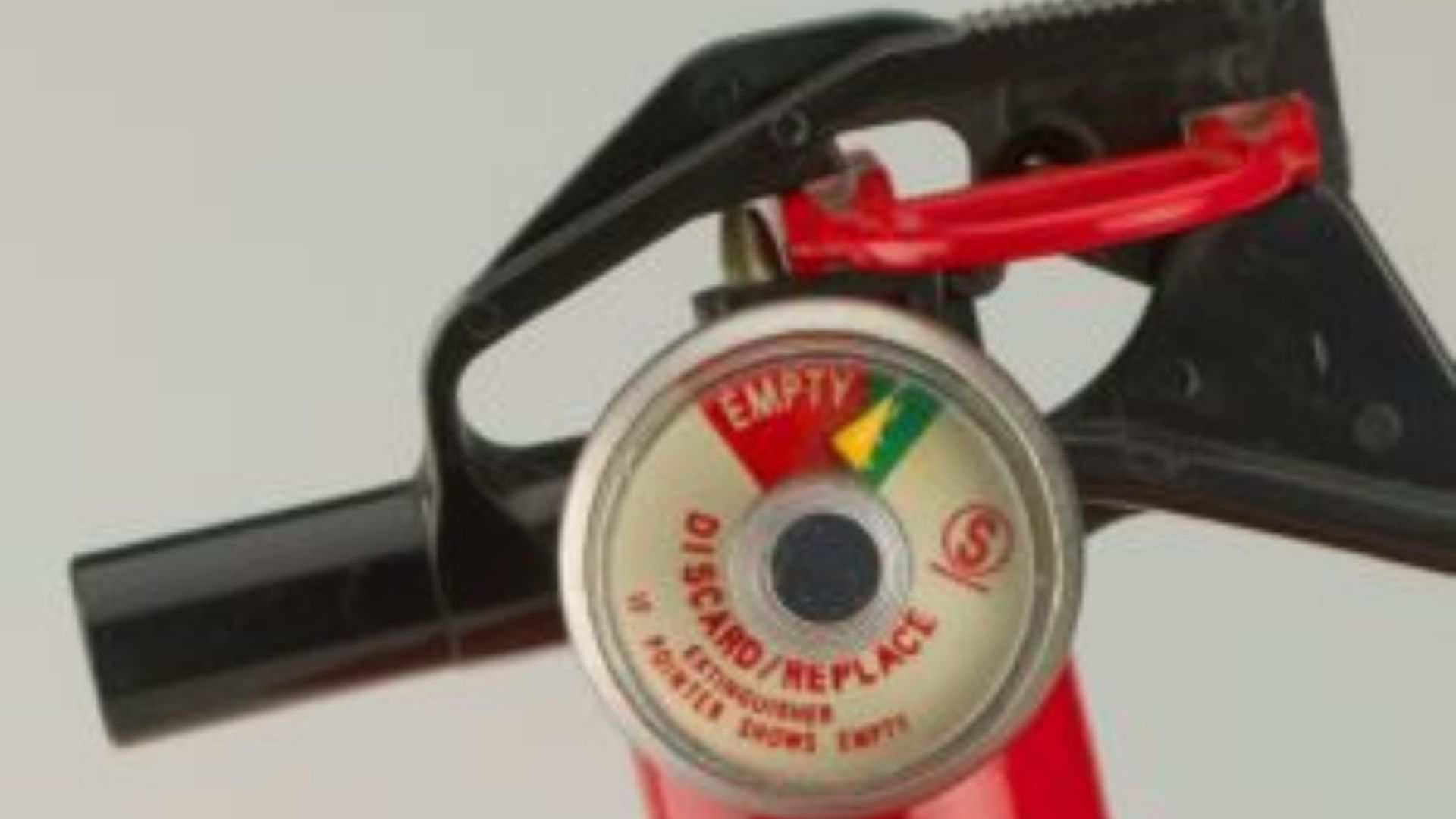Pressure Indicator Gauge
Pressure Indicator Gauge:
The pressure gauge is a meter typically located on the front or top of the fire extinguisher. It has a dial with a needle that points to a colored zone. Here’s how it functions:
- Gauge Dial: The dial is usually marked with two main sections – a green zone and a red zone.
- Needle Position: In a properly charged extinguisher, the needle rests within the green zone on the gauge dial. This indicates the extinguisher is pressurized and ready for use.
- Red Zone Warning: If the needle falls into the red zone, it signifies the extinguisher is not pressurized or has insufficient pressure for proper operation. In this case, the extinguisher should not be used and requires professional maintenance or recharge.
Importance of Pressure Gauge Checks:
Regularly monitoring the pressure gauge is essential for ensuring extinguisher readiness. Here’s why:
- Early Detection of Issues: A pressure gauge that consistently reads within the red zone indicates a potential problem with the extinguisher’s internal pressure. This could be due to a leak, malfunction, or improper recharge.
- Maintaining Fire Safety: A non-functioning extinguisher poses a safety risk during a fire emergency. A faulty pressure gauge can provide a false sense of security, potentially leading to delayed evacuation.
Additional Considerations:
- Not all fire extinguishers have a pressure gauge. Some older models may rely on pressure seals that break upon activation.
- It’s crucial to consult the extinguisher’s manual for specific instructions on interpreting the pressure gauge readings and recommended maintenance schedules.
- If you suspect an extinguisher is not pressurized or has a faulty gauge, report it to the designated personnel for maintenance or replacement.
By understanding the role of the pressure gauge and conducting regular pressure checks, you can help ensure your fire extinguishers are functioning properly and ready to use in an emergency.

